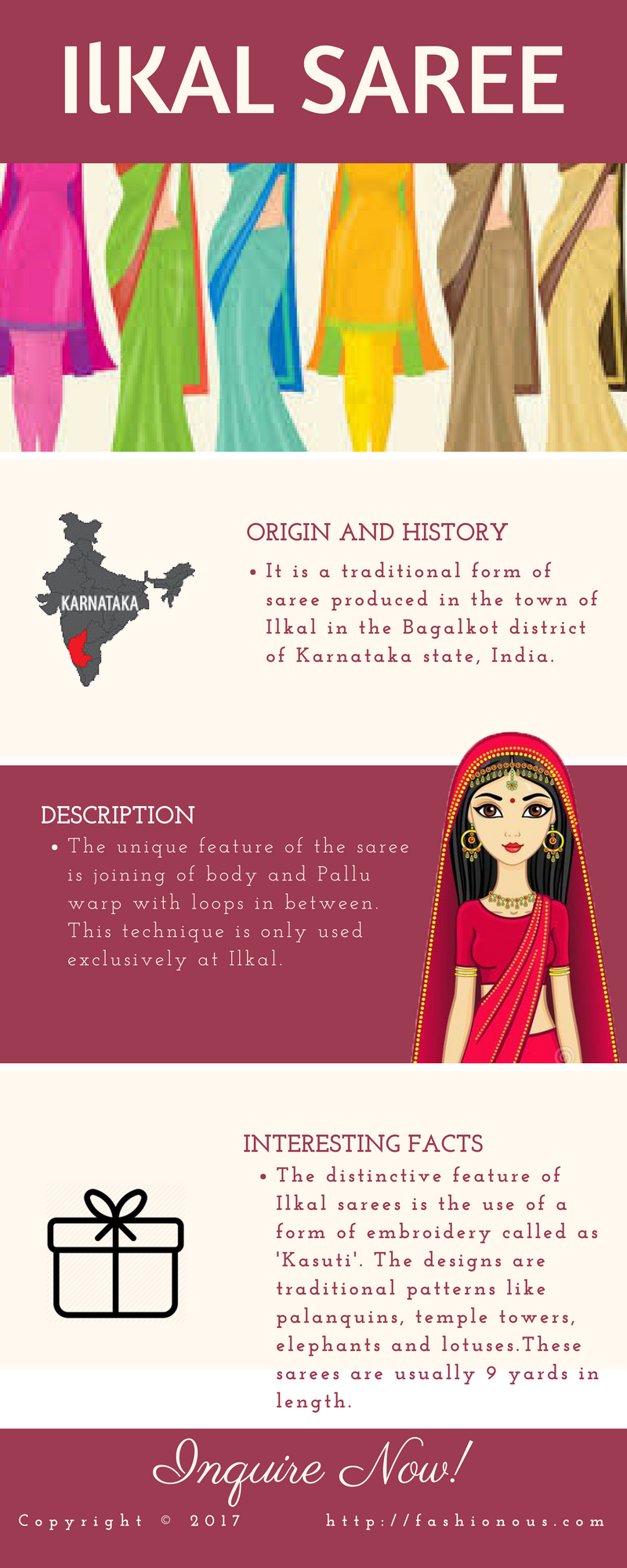Ilkal saree is a traditional piece of clothing produced in the town of Ilkal in the Bagalkot district of Karnataka state. They are famous for the ‘tope teni’ technique, which involves the joining of the body warp with the pallu warp with a series of loops. This technique is exclusively used in Ilkal. Preparatory work requires 2-3 artisans while the weaving process only requires 1 person. Production can take upto 7 days, with the help of a hand-loom.
The warp threads for the body are prepared seperately from the pallu. Both using different silks; artificial or pure. Generally the color used on the border is the same as the pallu. The distinct characteristic features in these sarees is the embroidery called as Kasuti. These designs are of palanquins, elephants, lotuses, etc. The sarees are generally 9 yards in length. The pallu carries designs of temple towers, made of red silk with white patterns. The border is very broad and usually in red or maroon color.

The saree is made either of cotton or a mixture of cotton and silk. Sometimes may also be available in pure silk. Traditionally, colors used are pomegranate red, peacock and parrot green. These sarees are famously used for bridal wear and are made of a colour called Giri Kumukum which is associated with the sindhoor worn by the wives of the priests in the Karnataka region.

